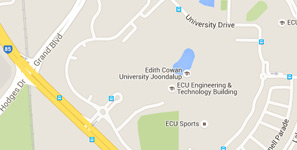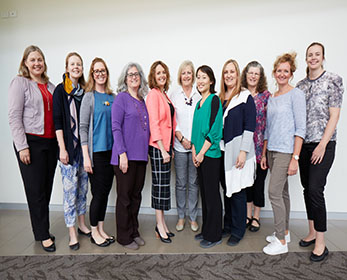Brogan, E., Godecke, E., and Ciccone, N., (2020). Behind the therapy door: What is ‘usual care’ aphasia therapy in acute stroke management? Aphasiology doi:10.1080/02687038.2020.1759268
Brogan, E., Ciccone, N., and Godecke, E (2020). An exploration of aphasia therapy dosage in the first six months of stroke recovery. Neuropsychological Rehabilitation doi:10.1080/09602011.2020.1776135
Godecke, E., Armstrong, E., Rai, T., Rose, M. L., Ciccone, N., Middleton, S., Whitworth, A., Holland, A., Ellery, F., Hankey, G. J., Cadilhac, D. A., & Bernhardt, J. For The VERSE Collaborative Group (2020 online) A randomised controlled trial of intensive aphasia therapy after acute stroke: The Very Early Rehabilitation for SpEech (VERSE) study. International Journal of Stroke. DOI: 10.1177/1747493020961926
Dipper, L., Marshall, J., Boyle, M., Botting, N., & Hersh, D., & Pritchard, M. (2020 online). Treatment for improving discourse in aphasia: a systematic review and synthesis of the evidence base. Aphasiology. https://doi.org/10.1080/02687038.2020.1765305
Mills, B., Hansen, S., Nang, C., McDonald, H., Lyons-Wall, P., Hunt, J., O'Sullivan, T., (2020), A pilot evaluation of simulation-based interprofessional education for occupational therapy, speech pathology and dietetic students: improvements in attitudes and confidence. Journal of Interprofessional Care, 34(4), 472-480, DOI: 10.1080/13561820.2019.1659759.
Meldrum, S., Heaton, AE., Foster, J., Prescott, SL., Simmer, K., (2020), Do infants of breast-feeding mothers benefit from additional long-chain PUFA from fish oil? A 6-year follow-up. The British Journal of Nutrition: an international journal of nutritional science, 124(7), 701-708, Cambridge University Press, DOI: 10.1017/S000711452000135X.
Brewer, K., Lewis, T., Bond, C., Armstrong, E., Hill, A. E., Nelson, A., & Coffin, J. (2019). Maintaining cultural integrity in Aboriginal and Māori qualitative research. In L. McAllister & R. Lyons (Eds.), Qualitative Research in Communication Disorders: An Introduction for Students and Clinicians. UK: J & R Press.
Armstrong, E., Coffin, C., Hersh, D., Katzenellenbogen, J. M., Thompson, S. C., Ciccone, N., Flicker, L.,Woods, D.,Hayward, C., Dowell, C., & McAllister, M. (2019, online). “You felt like a prisoner in your own self, trapped”: The experiences of Aboriginal people with acquired communication disorders. Disability & Rehabilitation. DOI: 10.1080/09638288.2019.1686073
Armstrong, E., Ciccone, N., Hersh, D., Katzenellenbogen, J., Thompson, S., Flicker, L., Coffin, J., Hayward, C., Woods, D., McAllister, M. (2019, online). A screening tool for acquired communication disorders in Aboriginal Australians after brain injury: lessons learned from the pilot phase. Aphasiology. DOI: 10.1080/02687038.2019.1678107
Ciccone, N., Armstrong, E., Hersh, D., Adams, M., & McAllister, M. (2019). The Wangi (talking) project: a feasibility study of a rehabilitation model for Aboriginal people with acquired communication disorders after stroke. International Journal of Speech Language Pathology, 21, 305-316. DOI: 10.1080/17549507.2019.1595146
Armstrong, E., Coffin, J., McAllister, M., Hersh,D., Katzenellenbogen,J. M., Thompson,S. C., Ciccone, N., Flicker, L., Cross, N., Arabi, L., Woods D., &Hayward, C. (2019). “I've got to row the boat on my own, more or less”: Aboriginal Australian experiences of traumatic brain injury. Brain Impairment, 20(2), 120-136. doi:10.1017/BrImp.2019.19
Nang, C., Reynolds, V., Hersh, D., Andrews, C., Humphries, O., (2019), The experiences of migrants to Australia who stutter. Journal of Fluency Disorders, 62(December 2019), Article number: 105723, DOI: 10.1016/j.jfludis.2019.105723.
Lewis, A., Kirkman, A. & Holmes, L. (2019). Wellness in Allied Health students: the case for change. Health Education in Practice: Journal of Research for Professional Learning 2(1).https://openjournals.library.sydney.edu.au/index.php/HEP/article/view/13447
Lewis, A., Rudd, C. & Mills, B. (2018). Working with children with autism: an interprofessional simulation-based tutorial for speech pathology and occupational therapy students. Journal of Interprofessional Care 32(2), 242-244. http://dx.doi.org/10.1080/13561820.2017.1388221
Katzenellenbogen, J., Atkins, E., Hersh, D., Coffin, J., Thompson, S. C., Flicker, L., Hayward, C., Ciccone, N., Woods, D., Greenland, M. E., McAllister, M., & Armstrong, E. M. (2018). Missing Voices: Profile, extent and 12-month outcomes of non-fatal traumatic brain injury in Aboriginal and non-Aboriginal adults in Western Australia using linked administrative records. Journal of Head Trauma Rehabilitation, 33(6), 412-423. DOI: 10.1097/HTR.0000000000000371
Nang, C., Hersh, D., Milton, K., Lau, SR., (2018), The Impact of Stuttering on Development of Self-Identity, Relationships, and Quality of Life in Women Who Stutter. American Journal of Speech-Language Pathology, 27(3S), 1244-1258, United States, American Speech-Language-Hearing Association, DOI: 10.1044/2018_AJSLP-ODC11-17-0201.
Godecke, E., Armstrong, E., Rai, T., Middleton, S., Ciccone, N., Whitworth, A., Rose, M., Holland, A., Ellery, F., Hankey, G. J., Cadilhac, D., & Bernhardt, J. (2016). A randomized controlled trial of very early rehabilitation in speech after stroke. International Journal of Stroke, 11(5),586-592. DOI: 10.1177/1747493016641116
Katzenellenbogen, J., Atkins, E., Thompson, S., Hersh, D., Coffin, J., Flicker, L., Hayward, C., Ciccone, N., Woods, D., McAllister, M., & Armstrong, E. (2016). Missing Voices: Profile and extent of acquired communication disorders in Aboriginal and non-Aboriginal adult stroke survivors in Western Australia. International Journal of Stroke, 11(1),103-116.
Armstrong, E., Hersh, D., Katzenellenbogen, J., Coffin, J., Thompson, S., Ciccone, N., Hayward, C., Flicker, L., & Woods, D. (2015). Study Protocol: Missing Voices- Communication difficulties after stroke and traumatic brain injury in Aboriginal Australians. Brain Impairment, 16(2),145 - 156.
Hersh, D., Armstrong, E., McAllister, M., Ciccone, N., Katzenellenbogen, J., Coffin, J., Thompson, S., Hayward, C., Flicker, L., Woods, D. (2019). General practitioners’ perceptions of their communication with Australian Aboriginal patients with acquired neurogenic communication disorders. Patient Education and Counseling, 102, 2310-2317. https://doi.org/10.1016/j.pec.2019.07.029 0738-3991/
Hersh, D., Woods, P., & Armstrong, E. (2018). Informality, interaction and the development of relationship during aphasia assessment in the early period after stroke. Aphasiology, 32(8), 876-901. DOI: 10.1080/02687038.2017.1381878
Penn, C., Armstrong, E., Brewer, K., Purves, B., McAllister, M., Hersh, D., Godecke, E., Ciccone, N., & Lewis, A. (2017). De-colonizing Speech-Language Pathology practice in acquired neurogenic disorders. SIG 2 Perspectives on Neurophysiology and Neurogenic Speech and Language Disorders, Vol 2(3), 91-99.
Armstrong, E., Hersh, D., Hayward, C., & Fraser, J. (2015). Communication disorders after stroke in Aboriginal Australians. Disability and Rehabilitation, 37(16): 1462–1469.
Hersh, D., Armstrong, E., Panak, V., & Coombes, J. (2015). Speech-language pathology practices with Indigenous Australians with acquired communication disorders: results of a national survey. International Journal of Speech Language Pathology, 17(1),74-85.

